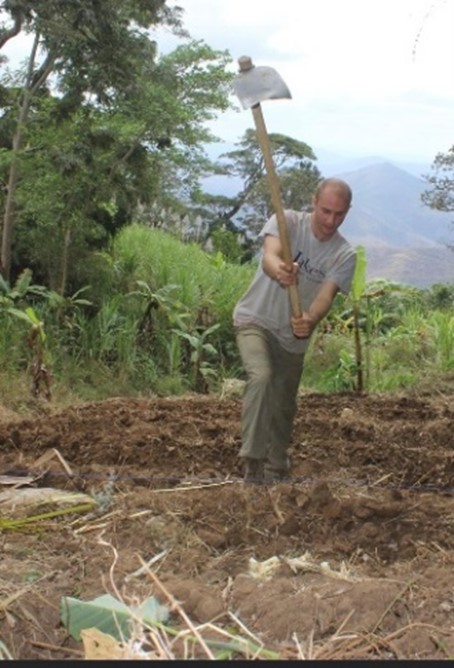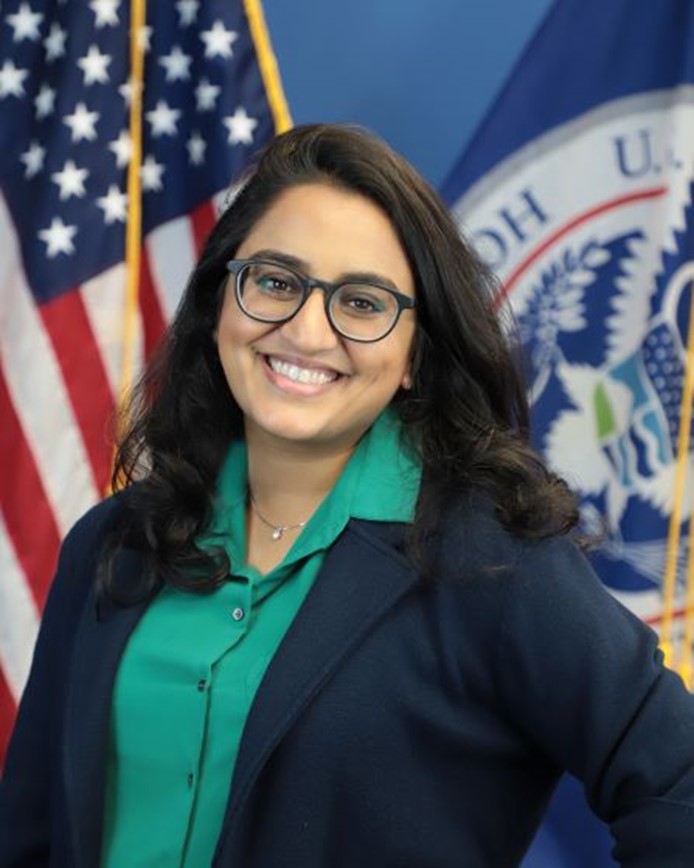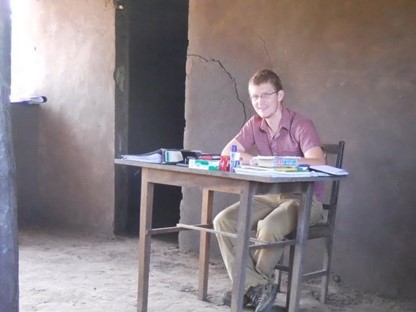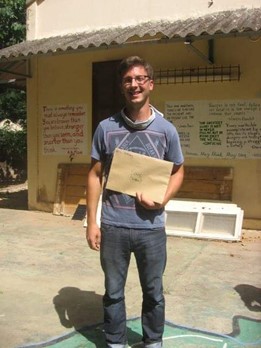Feb. 26 – March 4 is Peace Corps Week, a time to honor and recognize the important contributions Peace Corps volunteers have made across the world. Today, over 200 returned Peace Corps volunteers work at FEMA. The skills they developed and experiences they gained continue to aid the agency in its mission of helping people before, during and after disasters.
On March 1, 1961, President John F. Kennedy officially created the Peace Corps when he signed Executive Order 10924. For 62 years, at the invitation of foreign governments, more than 240,000 Americans have served the United States and countries around the globe as Peace Corps Volunteers.
In March 2022, volunteers returned to overseas communities for the first time since the global evacuation of volunteers in 2020 because of COVID-19. Volunteers are working alongside community members to address the impacts of COVID-19 and climate change and to tackle local development priorities across the Peace Corps’ six programming sectors: Agriculture, Community Economic Development, Education, Environment, Health and Youth in Development.
This week, we asked FEMA employees to share their Peace Corps experiences, what those experiences mean to them and how those experiences prepared them for their current role at FEMA.
Brett Thompson – FEMA Region 3 Field Deployment Unit Supervisor

Where did you serve and what did you do?
I served in northern Tanzania in the Pare mountains in a small rural village as an Agricultural Extension Officer. During my service, I focused on sustainable agriculture through the development of various community-based initiatives on projects ranging from clean water access, climate-focused initiatives, income-generating activities as well as teaching health education at the local primary and secondary schools.
One of my key highlights was working with village women groups on income-generating activities such as animal husbandry and charcoal making.
How does your Peace Corps experience influence your work at FEMA?
My Peace Corps experiences greatly influenced my career and work at FEMA. I had many unique experiences shaping me into who I am today. I learned to work in low-resourced areas and how to use creativity to accomplish goals and deliverables. Working in austere environments in Peace Corps truly made me understand how essential flexibility is and how it can often lead to better or stronger solutions to problems.
Bianca Kapadia – DHS Center for Faith-Based and Neighborhood Partnerships Advisor

Where did you serve and what did you do?
I served in Panama in 2011-13. Panama is a small country with a lot of heart. I was stationed in a small village in the Azuero peninsula, which is the most deforested region of the country due to colonization.
I lived and worked with cattle ranchers, and we reforested waterways with fruit trees so folks would be less likely to cut them down and reforested cattle pastures with Leucaena leucocephala trees that assisted female cows with milk production and served as a food source during drought seasons for all livestock. We also built eco-friendly cooking stoves that produced less smoke and caused less harm to people’s lungs.
How does your Peace Corps experience influence your work at FEMA?
Working in Panama gave me an appreciation for Latinx culture, different Indigenous cultures and Afro-Latinx culture. It helped me meet people where they’re at in their greatest time of need and gave me the experience of communicating in Spanish. This experience has been helpful when working with survivors on FEMA’s Individual Assistance Programs and explaining mitigation programs to different stakeholders based on their needs.
Being a Peace Corps Volunteer taught me an appreciation for solutions to problems at the most granular level. Working at a grassroots-level during my service and hearing how different projects led to a greater impact in the community and at a provincial level has been extremely rewarding.
Andrew Bracken – FEMA Public Assistance Program Analyst

Where did you serve and what did you do?
I supported small enterprise development in Cabo Verde from 2008-10 and tackled food insecurity issues in Mozambique from 2010-11.
In Cabo Verde, I served with the Parque Natural do Fogo. I worked closely with the wine cooperative in my village, where I developed costing and production models for wines and a quince liquor, worked in production and bottling and gave tours and tastings. When a Dengue fever epidemic which hit my island, I worked with local health technicians in public health outreach and water treatment. I also managed a composting toilet project funded by Luxembourg to ensure construction remained on track. Finally, I supported a local youth association’s grant writing efforts to put on youth engagement events in my village.
In Mozambique, I served with the USAID AgriFUTURO project in Chimoio and Nampula. I worked with emerging farmers to ensure they received their disbursements from local banks and complied with USAID rules. I developed and carried out surveys with a team of Mozambican agronomists of a vast agricultural cooperative in Nampula Province, which culminated in an English/Portuguese report to inform its Norwegian funders of its then membership and production and how its Fair-Trade program functioned.
How does your Peace Corps experience influence your work at FEMA?
For me, it was a multistep process going from Peace Corps to FEMA. Peace Corps inspired me to complete a Master of Public Policy from the University of Michigan Ford School of Public Policy, which I used to work in international development for seven years. In my final year implementing the USAID Feed the Future Partnering for Innovation project, I negotiated and managed grants in Mozambique to support the agricultural sector’s recovery from tropical cyclones Idai and Kenneth, which devastated cropland and agribusinesses in the country. That experience bolstered my interest in disaster response and recovery, hence my motivation to work for FEMA.
I would recommend the Peace Corps to almost anyone, and while I did it straight out of college, I think the more-experienced volunteers provided an incredible benefit to their counterparts and host organizations.
My Country Director in Cabo Verde told me, “It is not what you accomplish in your two years of Peace Corps service that matters most, but what it prepares you to do for the next 30 years serving the public back home in the U.S.”
Lorraine Moore Williams – FEMA Diversity and Inclusion Specialist, Equal Employment Opportunity Specialist

Where did you serve and what did you do?
I spent 27 months as a Peace Corps Volunteer designing and developing online Professional Development courses for the Armenian Ministry of Science and Education in student- centered teaching. During my service in Armenia, I trained teachers across the country. Before Peace Corps, I accumulated many years of volunteer and non-paid service appointments.
How does your Peace Corps experience influence your work at FEMA?
I have always been passionate about service to humanity! And, when the opportunity presented itself, I joined Peace Corps Armenia from 2012 to 2014. My Peace Corps experience led me to work in the public sector. Peace Corps helped me to achieve my goal of integrating service into my daily life/work at FEMA and fueling my energies in the Office of Equal Rights towards my strong desires for social justice.
Eric Trefney – FEMA Individual Assistance Equity Analyst

Where did you serve and what did you do?
I served in Senegal’s Sahel Desert region in a small, remote village with a population of around 200 people as an Agroforestry Agent and combatted desertification and deforestation with local partners and focused on women’s empowerment through financial and health projects.
My local host community was struggling with water security, especially during the hot season where temperatures could reach up to 125 degrees. With the guidance of local leaders my community partners and I successfully advocated to have the Senegalese government repair 10 hand water pumps to ensure clean and accessible drinking water was available to several communities in my host region.
How does your Peace Corps experience influence your work at FEMA?
I draw from my Peace Corps experience almost daily, whether at work or in life; the skills and lessons learned as a volunteer are almost always applicable. While serving in Senegal, I worked with local women who often have limited options regarding landownership, financial independence or opportunity to seek higher education. These women’s stories have stayed with me and are a constant reminder of why I am an equity analyst, to ensure the often-underserved groups and communities are seen and heard.
I’m encouraged by our agency’s equity plans. I continue to look forward to contributing and using my skills in equity to ensure positive impacts are being reached within the agency and the communities FEMA serves.
William Burriss – Congressional Affairs Specialist

Where did you serve and what did you do?
I served in Morocco from 2016-18 during my Peace Corps experience in a small Arab and Berber village where the olive groves outside of Marrakech meet the foothills of the Atlas Mountains. I worked with my host family and local counterparts, we opened a youth center called a Dar Chabab, which is kind of like a mini-YMCA for students of all ages. Together we created a library, built a game room and set up the village’s first computer lab to support the educational programs we organized on behalf of students visiting between classes and over the weekends. These efforts eventually led to us starting several micro libraries in nearby schools and dormitories using international donations and a USAID grant.
Once a week I taught a creative writing course at the University of Marrakech for graduate students in the English program and led a foreign affairs club within the State Department sponsored Marrakech American Corner.
My favorite project was a 200 km (~124 miles) hike with Moroccan medical professionals and other volunteers, during which we backpacked medical and educational supplies to very isolated communities along the Atlantic coast. Although if I had to do it all over again, I may not be so quick to offer to carry the schoolbooks.
How does your Peace Corps experience influence your work at FEMA?
You need to be extremely flexible in the Peace Corps. Whether it’s figuring out how to hitch-hike across the province when your bus breaks down under the Saharan sun or navigating new cultural norms in a new language while working with slightly skeptical officials in your new home, finding creative solutions with good humor was key.
The term “FEMA flexible” is often used to describe the ability to adhere to the ever-changing landscape of emergency management and really resonated when I first applied to work at the agency, and it’s continued to be a helpful mindset. But perhaps most helpful of all, I was able to successfully apply to work at FEMA in part because I received Non-Competitive Eligibility status after serving two years in the Peace Corps, which gave me a leg up during the USAJobs portion of the process.
In conclusion
Upon successful completion of Peace Corps, you qualify for non-competitive eligibility. With the non-competitive eligibility, a federal agency, like FEMA, can hire you outside of the formal competitive job announcement process.
To learn more about Peace Corps, visit PeaceCorps.gov or FEMA.gov.


